The Downtown Women’s Center: A Community Among The Forgotten
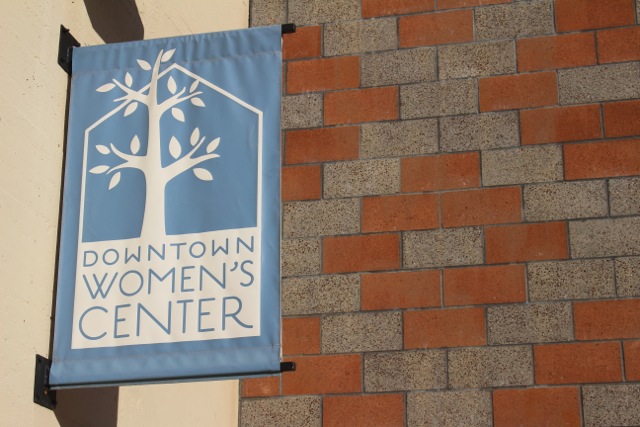
In the heart of Skid Row, the sun is reaching its afternoon peak. The asphalt glistens, concrete sizzles and shoddy tents rustle from a scattered breeze. Clusters of homeless men and women trudge along the downtown street, weaving through makeshift encampments seeking shade from the beating heat. There is a sense of trauma and hopelessness in the air, marked by a suffocating dryness.
But a block away, a very different scene is underway. Here, too, homeless people are gathered, but one wouldn’t know from looking. Groups of women sit in a communal cafeteria, smiling, laughing, and socializing with one another. The kitchen is abuzz with pots boiling and sinks splashing. One woman enters the cafeteria, jet black hair glistening wet.
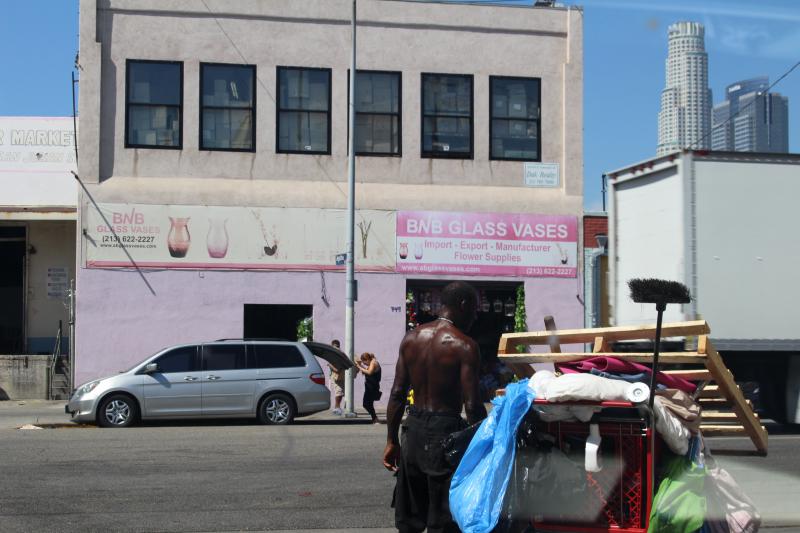
“How was your shower?” the receptionist asks her, juggling a phone call and a Girl Scout tour that just walked in.
The woman flashes back a knowing smile. “Great, she says. “See you tomorrow.”
For her and the 200 other women that come through the Downtown Women’s Center every day, it’s not just a pit stop, it’s home.
The nearly 40-year-old institution perched in the shadow of Skid Row is a blend of resources and stability for homeless and poverty-stricken women in Los Angeles. Serving nearly 4,000 women a year, it offers three meals a day, onsite medical care, permanent housing and a day center, among other services.
It is meant to serve as first a respite and then a long-term solution to the thousands of women suffering from homelessness in Los Angeles.
READ MORE: Homelessness State Of Emergency Gets Optimistic Response In San Pedro
And since first opening its doors in 1978, the need its addressing has only risen. Last month, the City Council declared a state of emergency regarding homelessness, pledging $100 million to combat a civic problem that leaves nearly 26,000 Angelenos sleeping on the streets each night.
But the monetary sources for the pledge in budget-strapped Los Angeles are still a mystery, and no concrete plan to attack the issue has been released yet. For some homeless women at the downtown center, there’s a fear it’s nothing more than empty words and lofty promises.
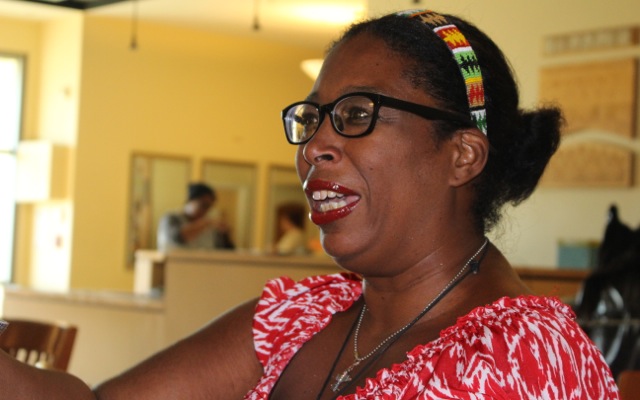
“The city and county do a lot of talking, and they throw money at homelessness, but there’s no real action,” said Taneka Poarch, 42, a former homeless woman who now volunteers at the center. “I don’t see any progress happening.”
The city’s move is meant to confront a grim reality: homelessness in Los Angeles has risen 12 percent in just the last two years. The issue has become so extreme that now it might take more than just what the city is promising.
“In Los Angeles County, we’re lacking 500,000 units of affordable and low income housings,” said Amy Turk, chief programs officer for the center. “$100 million is important in our first steps in that effort, but it’s not enough; it’s not sufficient.”
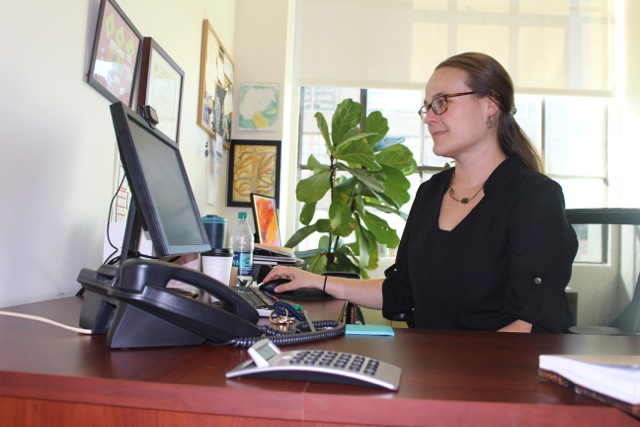
Turk cited it cost the center $35 million to renovate its San Pedro Street location five years ago, one of its two sites in downtown Los Angeles. The six-floor building, which includes a day center and onsite health clinic, currently houses 71 women.
“When you know that we ended homelessness for 71 women with $35 million dollars, it’s going to take many more millions of dollars to end homelessness for everyone in L.A. County,” she said.
READ MORE: Civic Hack Night Gathers Downtown Community To Address Homelessness
Those who run the center are pushing for the city to emphasize a housing-first solution, a practice that works to get homeless people immediately off the streets into permanent housing, rather than graduated transitions from shelters to temporary housing and so on.
Securing a spot in transitional housing is often contingent upon sobriety or treament for mental illnesses. Housing-first advocates argue that addressing such issues is much more effective once people have stable place to live.
“For many people that have addictions, it’s not realistic to expect sudden sobriety,” Turk said. “In fact, that could be a set up for losing housing.”
Pam Wells, a peer leader and volunteer at the center, was homeless for much of the last fifteen years. Now living in her own apartment, she said finding permanent housing through the women’s center was more important than any shelter or employment.
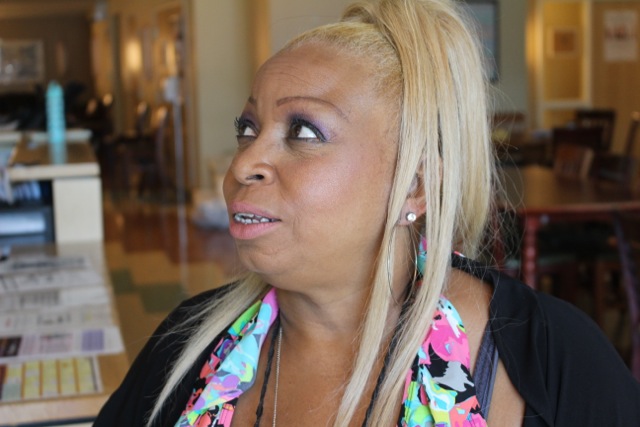
“I always thought, if I had a job, my life would get back to normal, but that wasn’t true,” Wells said. “My life was never going to be the way it was.”
Single adult women like Wells are an often underrepresented group among the chronically homeless, where the focus is can lie more on mothers and families.
But in the shadows, its a demographic at high risk for sexual assault and violence in a community that is predominantly male.
“It’s a group where their rate of victimization is quite high,” said Ben Henwood, an assistant professor at the USC School of Social Work who specializes in studying homelessness and the housing-first model. “What it means for a man versus a woman to be homeless is very different.”
It’s that difference that has largely influenced the center’s focus solely on single adult woman, a model that has been rarely replicated but highly requested.
“Resoundingly, women still want services in a female-only program,” Turk said. “There’s a level of safety that they feel in women-only programs.”
Between its two locations, the center provides permanent housing to 119 women. Though the center boasts a 95 percent rate for women staying housed, its rarely a flawless process. Turk said many of the women that come through the center’s doors have chronic mental and physical health conditions, which makes the path toward living independently much more complicated.
READ MORE: True Grassroots Efforts At Work Against Highland Park’s Homelessness
The program is not without its critics. As housing-first rises as the de facto strategy to combatting homelessness across the country, opponents have complained it siphons resources and attention away from older organizations that focus on temporary shelters and missions. Its leaders also warn the high cost of housing-first strategies help a lucky few while leaving out a large majority of homeless.
“It’s almost pitted missions and shelters against the housing-first approach,” Henwood said.
Henwood and Turk both agree that temporary shelters are an important weapon in the battle toward combatting homeless, and the two can exist side by side. The question, however, is where priority should lie. For them, housing-first is the answer.
“I think people are sophisticated enough to realize that you’re always going to need shelters in some form, but there’s a bit of a competition for resources,” Henwood said. “We’re at the tipping point now of people saying ‘Yes, housing-first is the way to do it.’”
As the city works to finalize its plan toward emergency shelter, the Downtown Women’s Center has a seat at the table. They are sitting in on focus groups to advise courses of action and are pushing for the money to focus on expanding permanent, affordable housing and mental health care focused on trauma.
But for now, maintaining the community that the center has fostered over the past few decades remains its top priority. For those like Wells, it’s the most important thing.
“The way I survived — it was something that happened when I came to the Women’s Center,” she said. “It made me feel like something was changing in my life. I didn’t know what,, but something was different and I felt better, I felt part of life, that I wasn’t a nobody or invisible anymore.”
Reach Staff Reporter Matt Lemas here.



